All Activity
- Last week
-
Lutan250 joined the community
-
Oliwennard joined the community
-
Claim of Citizenship There are two forms of TWP Citizenship, which are you claiming? X Static Citizenship: Requires keeping a WA nation in TWP endorsing the Delegate Dynamic Citizenship: Requires becoming a TWP Ministerial staffer, without WA requirements If you are claiming Dynamic Citizenship, please link your TWP General Government Job Application: Participation in a Ministry is required to maintain Dynamic Citizenship. Link your TWP nation: This nation will be associated with your Citizenship and must stay in TWP to maintain citizenship. If you want to use a different nation in the future, let us know in the "Citizen Nation & WA Changes" thread. https://www.nationstates.net/nation=montrandec Link your World Assembly nation: Your TWP nation must be in the World Assembly to claim Static Citizenship. To claim Dynamic Citizenship, your WA nation may be elsewhere, but you must link your WA nation regardless. If you are claiming Dynamic Citizenship and do not have a WA nation, we recommend you apply here. https://www.nationstates.net/nation=montrandec List any current NS affiliations: Including regions or organizations with which you are currently a resident, citizen, or member. The Wellspring List any former NS affiliations: Including regions or organizations with which you are currently a resident, citizen, or member. TWP (I lost my citizenship due to inactivity), Carcasonne, Violetia List any NS aliases you use or have used: This primarily includes nations, names, or identities used in other regions. Montrandec, Newquay Beach, Newquay Forest, Dasteria, some more I might be forgetting, all are openly my puppets Discord Username A Discord account is not required for citizenship. However, much of TWP's social life and ministry coordination takes place on the TWP server. If you have an account, please post your handle here (e.g. "@username", rather than your display name or nickname) so that you can be given the proper roles. r9238yfh By posting this application, I verify the following statement: The information I have provided on the Citizenship Form is accurate and complete to the best of my knowledge, and I affirm that I have read and understand the TWP Bond of Citizenship.
-
Claim of Citizenship There are two forms of TWP Citizenship, which are you claiming? X Static Citizenship: Requires keeping a WA nation in TWP endorsing the Delegate Dynamic Citizenship: Requires becoming a TWP Ministerial staffer, without WA requirements If you are claiming Dynamic Citizenship, please link your TWP General Government Job Application: Participation in a Ministry is required to maintain Dynamic Citizenship. Link your TWP nation: This nation will be associated with your Citizenship and must stay in TWP to maintain citizenship. If you want to use a different nation in the future, let us know in the "Citizen Nation & WA Changes" thread. https://www.nationstates.net/nation=fornholm Link your World Assembly nation: Your TWP nation must be in the World Assembly to claim Static Citizenship. To claim Dynamic Citizenship, your WA nation may be elsewhere, but you must link your WA nation regardless. If you are claiming Dynamic Citizenship and do not have a WA nation, we recommend you apply here. https://www.nationstates.net/nation=fornholm List any current NS affiliations: Including regions or organizations with which you are currently a resident, citizen, or member. N/A List any former NS affiliations: Including regions or organizations with which you are currently a resident, citizen, or member. N/A List any NS aliases you use or have used: This primarily includes nations, names, or identities used in other regions. Fornhold Discord Username A Discord account is not required for citizenship. However, much of TWP's social life and ministry coordination takes place on the TWP server. If you have an account, please post your handle here (e.g. "@username", rather than your display name or nickname) so that you can be given the proper roles. @dodecanform By posting this application, I verify the following statement: The information I have provided on the Citizenship Form is accurate and complete to the best of my knowledge, and I affirm that I have read and understand the TWP Bond of Citizenship.
-
Fornholm joined the community
-
Eltan95 joined the community
-
Soviet Tuvalu joined the community
-
Natjax90 joined the community
- Earlier
-
There are two forms of TWP Citizenship, which are you claiming? x Static Citizenship: Requires keeping a WA nation in TWP endorsing the Delegate Dynamic Citizenship: Requires becoming a TWP Ministerial staffer, without WA requirements If you are claiming Dynamic Citizenship, please link your TWP General Government Job Application: Participation in a Ministry is required to maintain Dynamic Citizenship. Link your TWP nation: This nation will be associated with your Citizenship and must stay in TWP to maintain citizenship. If you want to use a different nation in the future, let us know in the "Citizen Nation & WA Changes" thread. https://www.nationstates.net/nation=fyrma Link your World Assembly nation: Your TWP nation must be in the World Assembly to claim Static Citizenship. To claim Dynamic Citizenship, your WA nation may be elsewhere, but you must link your WA nation regardless. If you are claiming Dynamic Citizenship and do not have a WA nation, we recommend you apply here. https://www.nationstates.net/nation=fyrma List any current NS affiliations: Including regions or organizations with which you are currently a resident, citizen, or member. List any former NS affiliations: Including regions or organizations with which you are currently a resident, citizen, or member. List any NS aliases you use or have used: This primarily includes nations, names, or identities used in other regions. Discord Username A Discord account is not required for citizenship. However, much of TWP's social life and ministry coordination takes place on the TWP server. If you have an account, please post your handle here (e.g. "@username", rather than your display name or nickname) so that you can be given the proper roles. kinks.v2 By posting this application, I verify the following statement: The information I have provided on the Citizenship Form is accurate and complete to the best of my knowledge, and I affirm that I have read and understand the TWP Bond of Citizenship.
-
Resident nation: Rtajad Discord name: manbreathing Map nation name: Rtajad A couple sentences about your nation: The Commonwealth of Rtajad (Rtajadsi Haitkra) is a federation of states under a republic. The head of state and the head of government of Rtajad is the Steward and is elected by the Council of States. The Steward holds supreme executive power and serves until his/her death or impeachment. The legislative branch of Rtajad's government is divided into two chambers, the Council of States and the Assembly. The Rtajadian national identity is centered around the Rtajadian language; anyone, regardless of race, religion, and other identities, who embraces the Rtajadian language and acknowledges Rtajadians as his/her brothers and sisters can be considered a Rtajadian. This concept stems from the legend of Srama, the fire-bringer and god of wisdom and virtue who rose among the tribes of what would become Rtajad and gifted humanity with Two Sacred Fires. He taught the scattered tribes a common tongue, the Rtajadian language, allowing them to unite and banish the False Powers from Rtajad. As his final act before ascending into the Oneness, the truth of this world, Srama anointed the first Mahru (sustainer of the fire), establishing a line of Mahrus annointing their successors. The Eighth Mahru, knowing that Rtajadians had matured enough to be worthy of Srama's fire, anointed the entire Rtajadian nation as Mahrus, for they had faithfully risen in Srama’s name and fought to uphold his truth. Rtajad’s right to bear arms originates from the Rtajadian Revolution (1095 - 1101 AF), a brutal conflict that toppled the separate Kingdoms that used to rule Rtajad and gave rise to the current Commonwealth. With no standing army, the revolution depended on citizen militias armed with looted or improvised firearms. These militias became the backbone of the revolution and remained active even after victory, leading to the right to bear arms being enshrined in the Instrument of Union and Common Authority. However, this results in a heavily armed society where security is remarkably decentralized and where armed militias are common occurrence over the course of the Commonwealth's history. As a consequence, Rtajadians often struggle to solve disputes without resorting to threat of arms. The economy of the Commonwealth is a regulated mixed system centered around a strong manufacturing base. Rtajad's primary exports are electronic products, a result of policies encouraging high-tech industries during the 1370s. A sizeable small arms manufacturing sector exists in Rtajad as well. Rivers on the east and the relatively calm Southern coast enable efficient transport of goods across Rtajad and support a niche shipbuilding sector (only if the red border application is approved). The nation relies primarily on imported fossil fuel for electricity, though a growing share of the nation's energy production is powered by renewables, especially hydroelectric power. The northeast maintains a decent sized agricultural sector, though Rtajad remains a net importer of food. Map request as an image or plot number: Marked with red border, though if that's not possible I'd pick the one marked with blue border (standard plot). 3-Letter Code: RTJ 2-Letter Code: RT Capital City: Itrajed (marked with red/blue star) Government Type: Semi-constitutional Elective Monarchy The population of my nation is: Average (depends on density) The population density of my nation is: Average The GDP per capita of my nation is: Average Government Spending - Which statement best describes your nation? 2nd Opt My nation provides moderate social programs, or a small selection of social programs. X My nation has an extensive social safety net, or provides multiple programs like universal healthcare, welfare, and free tuition for its citizens My nation does not provide social programs beyond bare necessities and/or high school educations. My nation does not prioritize social spending, but engages in some large-scale government or public spending projects. My nation’s government spending is a vast majority of our GDP, such as having to coordinate our import-dependent economy. (this option is subject to Cartography Board approval) Military Indicator - Which statement best describes your nation? X My nation has made a commitment to security, and maintains a moderately sized modern armed forces within our means. My nation has little incentive or political drive for military spending, but maintains a small-to-moderate modern armed forces. My nation has prioritized military spending at the expense of other key areas and may have been criticized for lack of freedom or human rights issues. My nation does not prioritize military spending due to other priorities, the belief we are safe, or we don’t have enough money left over to fund it. My nation is heavily embattled and we believe we face an existential threat. (this option is subject to Cartography Board approval) Any other inspirations or concepts you want to share: "Language nationalism" pulled straight out of Indonesia's Youth Pledge. Federal state with high number of ethnic groups (indigenous and newly arrived alike), based on Nigeria. Rtajadian language here is supposed to be a creole language that emerged around 300s BF which was and is spoken as a lingua franca across Rtajad. Government inspired by the English Commonwealth, though modified. Economy inspired by East Asian countries actively transitioning towards mid and high tech export-oriented manufacturing during the latter half of 20th century. Area ideally should be around the size of Great Britain, though I'm willing to shave off parts of the claim to preserve the high industrial output.
-
Natfin56 joined the community
-
 Logical Stimulus reacted to a post in a topic:
Admin Requests Part Quatre
Logical Stimulus reacted to a post in a topic:
Admin Requests Part Quatre
-
Resident nation: Fyrma Discord name: kinks.v2 Map nation name: Formally: Zarin Autonomous Republics (Z.A.R) or Zarin Republic, informally: Zarna A couple sentences about your nation: (original content, not NationStates stats) The Zarin Republic is a nation primary focused on economics, trade and soft power, similar to Venice or Portugal. It was settled a few centuries ago by this worlds equivalent to vikings and slavs looking for regions with slightly better climate but rough terrain. The nation was divided for a long time with its different states rising and falling until a very rich trade city of Sarai united all the islands together, and now Sarai is the brain and the heart of the nation. The nation's focus now is economics, education, art, law, architecture, technology but it doesn't shy away from showing its teeth when needed with a strong secret police operating inside and outside for covert missions. The economy is trade and manufacturing based in the north, with sectors like automobile manufacturing, arms industry, furniture, appliances, electronics, while the south is more agriculture, tourism and resource focused. Capitalist but with socialist and market-socialist elements, for example many laws that deregulate businesses and allowing all citizens to invest in almost anything and buying stocks, but also policies like free public housing to working citizens. Ideologically and culturally, the nation is an extreme center, with some policies being far left, others far right. The head of the state is The Chancellor. And the leader is usually female. And also to religious leader. The parliament has 1500 seats for various factions, with the chancellor herself holding 200 seats. 1 term if 5 years long, and each new term in a row that the chancellor gets elected, new powers get unlocked. If the chancellor gets voted for the 4th time in a row, they become chancellor for life. The nation is very strategic and machiavellistic, cautious to protect its culture which has many layers and traditions which is its "soul". In some sense closed of, in others very open. Architecture is a mix of brutalist, neoclassical and gothic/nordic Heavy focused is placed on beauty, fitness, aesthetics and good looks because it is considered the "social currency" Men are muscular or fit with long hair, women are beautiful with long hair following 80s style fashion or wearing long veils. Nordic and Slavic type. Map request as an image or plot number: (forum embed or Imgur link) 3-Letter Code: ZAR 2-Letter Code: ZN Capital City: Sarai Government Type: Serene Republic The population of my nation is: Average The population density of my nation is: Above Average The GDP per capita of my nation is: Above Average Government Spending : My nation does not prioritize social spending, but engages in some large-scale government or public spending projects. / My nation provides moderate social programs, or a small selection of social programs. Military Indicator: My nation has made a commitment to security, and maintains a moderately sized modern armed forces within our means.
-
ZAR joined the community
-
Claim of Citizenship There are two forms of TWP Citizenship, which are you claiming? X Static Citizenship: Requires keeping a WA nation in TWP endorsing the Delegate Dynamic Citizenship: Requires becoming a TWP Ministerial staffer, without WA requirements If you are claiming Dynamic Citizenship, please link your TWP General Government Job Application: Participation in a Ministry is required to maintain Dynamic Citizenship. Link your TWP nation: This nation will be associated with your Citizenship and must stay in TWP to maintain citizenship. If you want to use a different nation in the future, let us know in the "Citizen Nation & WA Changes" thread. https://www.nationstates.net/nation=rtajad Link your World Assembly nation: Your TWP nation must be in the World Assembly to claim Static Citizenship. To claim Dynamic Citizenship, your WA nation may be elsewhere, but you must link your WA nation regardless. If you are claiming Dynamic Citizenship and do not have a WA nation, we recommend you apply here. https://www.nationstates.net/nation=rtajad List any current NS affiliations: Including regions or organizations with which you are currently a resident, citizen, or member. N/A List any former NS affiliations: Including regions or organizations with which you are currently a resident, citizen, or member. N/A List any NS aliases you use or have used: This primarily includes nations, names, or identities used in other regions. N/A Discord Username A Discord account is not required for citizenship. However, much of TWP's social life and ministry coordination takes place on the TWP server. If you have an account, please post your handle here (e.g. "@username", rather than your display name or nickname) so that you can be given the proper roles. @manbreathing By posting this application, I verify the following statement: The information I have provided on the Citizenship Form is accurate and complete to the best of my knowledge, and I affirm that I have read and understand the TWP Bond of Citizenship.
-
Should be good to go.
-

UAD-ARF Football Friendlies
Arifiyyah replied to United Adaikes's topic in Roleplay - How the West Was Won
ARIFIYYAH REPRESENT: BANDA BAHARU CITY FC Official Name: Banda Baharu City Football Club Year Founded: 1321 Nickname: The Citizens 1424/1425 Hone Kit Location and Stadium City/State: Banda Sultan Nazhim II, Banda Baharu Stadium: Sultan Nazhim II Grand Stadium Capacity: 68,000 Known for its roaring atmosphere and iconic architecture, it’s the fortress of the Bandaran faithful. Achievements League Titles: 35 Wins FA Cups: 16 Wins League Cups (Sultan Arifiyyah Cup): 14 wins. Recent Success: Crowned Arifiyyah Premier League 2024/2025 champions. Clinched the FA Cup in the same season, completing a historic domestic double. Team Style and Tactics Playstyle: Possession-based football, controlling games with precision passing and strategic positioning. Style Rating: +2.5 Management and Players Management Team 1. President: Tuan Haji Azlan Hafiz bin Abdullah 2. Vice President: Encik Amirul Hakim bin Shahruddin 3. Chief Executive Officer (CEO): Puan Sri Nadia Khairunisa binti Zulkifli 4. Director of Football: Encik Fariz Aiman bin Razali 5. Financial Officer: Puan Sofea Nur Amirah binti Idris 6. Head of Media Relations: Encik Hakim Afdhal bin Rahman --- Coaching Staff 1. Head Coach: Encik Muhammad Zikri bin Syahmi 2. Assistant Coach: Encik Faizal Rizqi bin Rahmat 3. Goalkeeping Coach: Encik Shahril Iqbal bin Mansor 4. Fitness Coach: Encik Luqman Haziq bin Khalid 5. Tactical Analyst: Encik Arif Danish bin Mahfuz 6. Youth Development Coach: Encik Irfan Haikal bin Abdullah 7. Physiotherapist: Puan Aisyah Liyana binti Idris Banda Baharu City FC Squad List (1424/25 Season) Goalkeepers (3) 1. Amzar – GK – 35 2. Hafeez Harith – GK – 22 3. Syafiq Zharif – GK – 28 Defenders (8) 4. William Saliba – CB – 21 5. Shafiq Aiman – CB – 30 6. Rizqi Danish – CB/CDM – 26 7. Arif Danial – LB/CB – 25 8. Irfan Zulkarnain – LB – 21 9. Faiz Hilmi – RB/RWB – 27 10. Iskandar Haziq – RB/CB – 27 11. Syafiq Rizwan – LM/LB – 28 Midfielders (8) 12. Syameer Kutty – CDM/CM – 24 13. Hakimi Rashid – CDM/CM – 29 14. Ikhwan Firdaus – CM/CAM – 23 15. Adam Luqman – CAM/CM – 23 16. Faris Amir – CDM/CB – 28 17. Zulhilmi Hadi – RM/RW – 24 18. Aiman Khalid – RW/RM – 20 19. Syafiq Danish – LM/LW – 22 Forwards (3) 20. Luqman Hakim – ST – 20 21. Najib Razak – LW – 18 22. Hafiz Aqil – RW/ST – 22 Average Lineup Fan Culture Fan Name: Bandaran Known as some of the most passionate and creative fans in Arifiyyah. Famous for their tifos, displayed at every match, often blending artistry with powerful messages. Rivalries: A heated rivalry with Medina Arif FC, marked by intense matches and fan banter. A local rivalry with Kota Tinggi FC, fueled by regional pride. -
Arifiyyah started following UAD-ARF Football Friendlies
-
Historic Signing: @United Adaikes & @Arifiyyah Forge New Football Partnership The grand halls of the Thraproy Grand Convention Center buzzed with anticipation as journalists from across United Adaikes and a visiting press corps from Arifiyyah gathered to witness the signing of a groundbreaking sports agreement between the two football-crazed nations. Flanked by the flags of both countries, the high-profile delegations took their seats at the center stage, ready to formalize a partnership years in the making. Under the glow of camera flashes, President Luke Salazar and Arifiyyah’s Sultan Arif Nazhim Shah exchanged firm handshakes before putting pen to paper, officially ratifying the United Adaikes-Arifiyyah Bilateral Sports Cooperation Agreement. The document, bound in sleek leather, symbolized not just a commitment to football but a bridge between Polaris and Aura. Foreign Affairs Secretary Anne Duncan addressed the room first, emphasizing the diplomatic significance: "Today is more than just about sports—it’s about unity. Through this agreement, we celebrate shared passion, respect, and the spirit of competition that will bring our peoples closer." United Adaikes Sports Commission Ezra Moors stepped up to the podium, unveiling the key points of the agreement to the press: Annual Senior National Team Friendly: A marquee match between the Adaikesian stars and Arifiyyah’s national squad, alternating host nations each year. Champions’ Showcase: The domestic league winners of both nations (Adaikes Premier Football League champions vs. Arifiyyah Premier League champions) will clash in a preseason exhibition. Youth & Coaching Exchanges: Joint training camps and development programs for rising talents. Infrastructure Collaboration: Shared expertise in stadium modernization and sports science. "This isn’t just a schedule—it’s a legacy," Moors declared. "We’re building a rivalry that will inspire generations." President Salazar grinned as he took questions, his voice brimming with pride: "Football is the heartbeat of United Adaikes. And now, we share that heartbeat with Arifiyyah. Let the best team win—but let the friendship last forever." Across the table, Sultan Arif Nazhim Shah echoed the sentiment, adding a playful jab: "Football is also the heartbeat of unity in Arifiyyah. When I mentioned this partnership to my brother, Muhammad Nazhim, our national team captain, he was thrilled about the collaboration and friendship we’re fostering. Winning or losing comes second—what matters most is the sportsmanship and camaraderie between players. But this year, I might owe someone a box of Arifiyyah’s finest pizza if we don’t win—hahaha!" Laughter rippled through the room before United Adaikes Football Association Head Myron Lillakis and Arifiyyah’s National Football League President Aiman Afifi Bakeyuddin shook hands over the new trophies unveiled for the annual friendly series, its polished surfaces awaiting the first engraving. The trophy on the left will be given to the winner of the international senior team friendly, while the trophy on the right will be given to the winner of the domestic league champions friendly. With formalities wrapped up, journalists scrambled for additional soundbites as the delegations mingled. The Adaikesian press speculated on potential venues, while Arifiyyah’s media debated squad selections. One thing was certain: a new chapter in Esferos football had begun.
-
Admin Requests Part Quatre
Logical Stimulus replied to Winnipeg's topic in Technical Forum Part Duex
Once again here to request Western Post masking, this time for @Aethenstaff. Merci -

Adaikes Volleyball League
United Adaikes replied to United Adaikes's topic in Roleplay - How the West Was Won
1423 AVL Invitational Group Stage Match Day 2 (Highlighted teams in yellow are UAAUA member schools) Group A (Realtors stay perfect, Chargers and Hawks stumble) San Lucas Realtors 22 25 25 17 16 Faraday Rough Striders 25 20 21 25 14 Realtors stun the Rough Striders! After winning their opener, San Lucas struggled with a gritty 22-25, 25-20, 25-21, 17-25, 16-14 victory. Faraday’s usually solid defense cracked under pressure—Realtors take 2 match points. Panorama Chargers 21 15 26 25 9 Bank Adaikes Smashers 25 25 24 22 15 HUGE UPSET! The Smashers shocked the Chargers (25-21, 25-15, 24-26, 22-25, 15-9). Panorama collapsed after tying 2-2—Bank Adaikes steals 2 match points. Air Adaikes Hawks 21 24 25 25 11 Air Force Eagles 25 26 9 13 15 The Hawks remain winless, Eagles survive in a five-set thriller (25-21, 26-24, 9-25, 13-25, 15-11). Air Force fought hard but faltered late—Eagles take 2 match points. The Realtors lead a chaotic Group A, while Panorama’s loss opens the door for underdogs. Group B (Griffins bounce back, Infernos fall, Ravens roar) UA Airlines Falcons 18 22 25 18 Golden Sierra Griffins 25 25 14 25 Griffins rebound! The UAAUA champs dominated the Falcons (25-18, 25-22, 14-25, 25-18) after their shock loss in the first matchday. UA Airlines’ inconsistency starts—Griffins take 3 match points. Navy Sea Lions 25 17 25 25 Eastview Infernos 20 25 12 16 Sea Lions sink the Infernos! Navy avenged their opening loss with a 25-20, 17-25, 25-12, 25-16 rout. Eastview’s Cinderella start fades—Navy takes 3 match points. Adaikes Coffee Ravens 24 25 25 25 AMeSCo Medics 26 16 19 16 Ravens finally win! After a tough opener, they crushed the Medics (24-26, 25-16, 25-19, 25-16). AMeSCo’s defense collapsed—Ravens take 3 match points. A six-way logjam! Every team is 1-1, making Group B the most unpredictable. Group C (Power and Drillers survive, Movers stumble) West Bridge Reds 25 16 18 23 Red Horse Power 19 25 25 25 Red Horse stays strong! The Power overcame the Reds (19-25, 25-16, 25-18, 25-23) after dropping the first set. West Bridge’s inconsistency costs them—Red Horse takes 3 match points. United Adaikes Oil Drillers 16 25 25 20 15 Pinewood Bullets 25 19 23 25 10 Bullets push Oil Drillers to the brink! A nail-biter (16-25, 25-19, 25-23, 20-25, 15-10) saw the Drillers escape. Pinewood’s effort goes unrewarded—Oil Drillers take 2 match points. A1 Cargo Movers 19 21 18 Coast Guard Sharks 25 25 25 Sharks bite back! After losing their opener, Coast Guard swept the Movers (25-19, 25-21, 25-18). A1’s early promise fades—Sharks take 3 match points. Red Horse is the class of Group C, while the Oil Drillers keep finding ways to win. Group D (Spikers stay perfect, Pirates and Troopers lose) UAMA Generals 20 17 8 La Mujer Spikers 25 25 25 Spikers dominate again! La Mujer crushed the Generals (25-20, 25-17, 25-8) in a statement win. UAMA’s struggles start—Spikers take 3 match points. Oakwood Pirates 20 29 21 Greater Heights Hitters 25 31 25 Hitters finally win! After the loss in the first matchday, they outlasted the Pirates (25-20, 31-29, 25-21). Oakwood’s inconsistency hurts them—Hitters take 3 match points. Army Troopers 26 22 23 Elk Valley Grizzlies 28 25 25 Grizzlies maul the Troopers! Elk Valley rolled (28-26, 25-22, 25-23) in a tight battle. Army’s five-set magic in the first matchday ran out—Grizzlies take 3 match points. La Mujer Spikers are the team to beat, while the Grizzlies solidify their contender status. -

Join a Ministry! TWP General Government Job Application
LesserNightston replied to Fujai's topic in Citizenship
Job Application Are you a TWP Citizen or have you applied for Citizenship and are waiting for a response? X Yes - Proceed to the next question. No - After submitting this job application, apply for Citizenship in this thread. You job application will not be processed until after you apply for Citizenship. What Ministries or Groups would you like to get involved in? TWP is a meritocracy and we recognize your contributions. For more information on our ministries, check out this dispatch. TWP Armed Forces - Military occupations, invasions, and defense. Also apply here! Ambassador - Representing TWP abroad. Also complete the TWP Diplomat Test. World Assembly Recruitment - Working with WA proposals World Assembly Recruitment - Working with internal citizenry and recruitment Recruiter - Sending telegrams to bring new people to TWP Guide - Help organize the RMB and welcome new nations to TWP Cultural Trust - Planning cultural events X The Western Post - Writing for the newspaper The West on the Waves - Producing and performing radio shows Other: ______________ -
Claim of Citizenship There are two forms of TWP Citizenship, which are you claiming? Static Citizenship: Requires keeping a WA nation in TWP endorsing the Delegate X Dynamic Citizenship: Requires becoming a TWP Ministerial staffer, without WA requirements If you are claiming Dynamic Citizenship, please link your TWP General Government Job Application: Participation in a Ministry is required to maintain Dynamic Citizenship. Link your TWP nation: This nation will be associated with your Citizenship and must stay in TWP to maintain citizenship. If you want to use a different nation in the future, let us know in the "Citizen Nation & WA Changes" thread. https://www.nationstates.net/nation=cebollonia Link your World Assembly nation: Your TWP nation must be in the World Assembly to claim Static Citizenship. To claim Dynamic Citizenship, your WA nation may be elsewhere, but you must link your WA nation regardless. If you are claiming Dynamic Citizenship and do not have a WA nation, we recommend you apply here. https://www.nationstates.net/nation=cebollonia List any current NS affiliations: Including regions or organizations with which you are currently a resident, citizen, or member. N/A List any former NS affiliations: Including regions or organizations with which you are currently a resident, citizen, or member. N/A List any NS aliases you use or have used: This primarily includes nations, names, or identities used in other regions. N/A Discord Username A Discord account is not required for citizenship. However, much of TWP's social life and ministry coordination takes place on the TWP server. If you have an account, please post your handle here (e.g. "@username", rather than your display name or nickname) so that you can be given the proper roles. @capitan_cebolla By posting this application, I verify the following statement: The information I have provided on the Citizenship Form is accurate and complete to the best of my knowledge, and I affirm that I have read and understand the TWP Bond of Citizenship.
-
Join a Ministry! TWP General Government Job Application
Cebollonia replied to Fujai's topic in Citizenship
Job Application Are you a TWP Citizen or have you applied for Citizenship and are waiting for a response? x Yes - Proceed to the next question. No - After submitting this job application, apply for Citizenship in this thread. You job application will not be processed until after you apply for Citizenship. What Ministries or Groups would you like to get involved in? TWP is a meritocracy and we recognize your contributions. For more information on our ministries, check out this dispatch. X TWP Armed Forces - Military occupations, invasions, and defense. Also apply here! X Ambassador - Representing TWP abroad. Also complete the TWP Diplomat Test. x World Assembly Recruitment - Working with WA proposals World Assembly Recruitment - Working with internal citizenry and recruitment Recruiter - Sending telegrams to bring new people to TWP Guide - Help organize the RMB and welcome new nations to TWP Cultural Trust - Planning cultural events The Western Post - Writing for the newspaper The West on the Waves - Producing and performing radio shows X Other: In the future, if I find that I have the time and can perform the tasks assigned to me with ease, I would like to be able to apply for the Western Post and the Cultural Trust. -
Resident nation: Yggdrissal Discord name: jimmyp2204 Map nation name: The Federal Republic of Yggdrissal A couple sentences about your nation: (original content, not NationStates stats) My Nation is a medium sized country preferably around 450-5000m^2. A federal Republic with a political system that has a senate, an executive branch, and juducial branch. A country that has only recently been founded after a brutal civil war. Map request as an image or plot number: (forum embed or Imgur link) A8 3-Letter Code: YGG 2-Letter Code: YG Capital City: Caltonne Government Type: Federal Republic The population of my nation is: Average The population density of my nation is: Above average The GDP per capita of my nation is: Below average Government Spending - Which statement best describes your nation? My nation provides moderate social programs, or a small selection of social programs. X My nation has an extensive social safety net, or provides multiple programs like universal healthcare, welfare, and free tuition for its citizens My nation does not provide social programs beyond bare necessities and/or high school educations. My nation does not prioritize social spending, but engages in some large-scale government or public spending projects. My nation’s government spending is a vast majority of our GDP, such as having to coordinate our import-dependent economy. (this option is subject to Cartography Board approval) Military Indicator - Which statement best describes your nation? X My nation has made a commitment to security, and maintains a moderately sized modern armed forces within our means. My nation has little incentive or political drive for military spending, but maintains a small-to-moderate modern armed forces. My nation has prioritized military spending at the expense of other key areas and may have been criticized for lack of freedom or human rights issues. My nation does not prioritize military spending due to other priorities, the belief we are safe, or we don’t have enough money left over to fund it. My nation is heavily embattled and we believe we face an existential threat. (this option is subject to Cartography Board approval) Any other inspirations or concepts you want to share: None that i can think of
-
Join a Ministry! TWP General Government Job Application
Yggdrissal replied to Fujai's topic in Citizenship
Job Application Are you a TWP Citizen or have you applied for Citizenship and are waiting for a response? X Yes - Proceed to the next question. No - After submitting this job application, apply for Citizenship in this thread. You job application will not be processed until after you apply for Citizenship. What Ministries or Groups would you like to get involved in? TWP is a meritocracy and we recognize your contributions. For more information on our ministries, check out this dispatch. TWP Armed Forces - Military occupations, invasions, and defense. Also apply here! X Ambassador - Representing TWP abroad. Also complete the TWP Diplomat Test. World Assembly Recruitment - Working with WA proposals World Assembly Recruitment - Working with internal citizenry and recruitment Recruiter - Sending telegrams to bring new people to TWP Guide - Help organize the RMB and welcome new nations to TWP X Cultural Trust - Planning cultural events X The Western Post - Writing for the newspaper The West on the Waves - Producing and performing radio shows Other: ______________ -
.thumb.jpg.08b489aafe429f279e583a32cdfd8ba7.jpg)
Commission an Embassy in Yakadu
Iboythegreat1 replied to Zogradia's topic in Roleplay - How the West Was Won
- The full title of your nation. The Republic of Clarinatia - Do you have a particular architectural style in mind for the chancery* building? (Feel free to send an image if you have something specific in mind, or leave this question blank if you're fine with a more generic design) - What is the name of your ambassador? Ilus Fletcher - How big is the diplomatic complement? (IRL this is typically 20-50 people, but can be in the 100s depending on how close the two nations are. Note that most staff members generally live in regular housing, outside embassy grounds) 30 people, though with high turnover due to the heat so the number fluctuates - What are your security needs? Low? High? Likely low when the embassy was built, but recently raised to medium (Thanks Fauthur) - Will you be hiring locally to supplement your security or other administrative needs? (The past 3 questions will determine the size of the chancery and its property) Local security, Clarinatian administration - Name any other cities in which you would like to commission a consulate (optional). Sapaka - Would you like the Federal Republic of Zogradia to send an embassy to your capital city as well? That'd be great! -
Noton Mast started following Commission an Embassy in Yakadu
-

Commission an Embassy in Yakadu
Noton Mast replied to Zogradia's topic in Roleplay - How the West Was Won
- The full title of your nation. The Third Federal Republic of Noton Mast - Do you have a particular architectural style in mind for the chancery* building? (Feel free to send an image if you have something specific in mind, or leave this question blank if you're fine with a more generic design) modernist architecture, a bit like the Villa Savoye (picture below) - What is the name of your ambassador? Ilmari Pietarinen - How big is the diplomatic complement? (IRL this is typically 20-50 people, but can be in the 100s depending on how close the two nations are. Note that most staff members generally live in regular housing, outside embassy grounds) 37 - What are your security needs? Low? High? Low security - Will you be hiring locally to supplement your security or other administrative needs? (The past 3 questions will determine the size of the chancery and its property) Mix of local hires and staff from Noton Mast - Name any other cities in which you would like to commission a consulate (optional). N/A - Would you like the Federal Republic of Zogradia to send an embassy to your capital city as well? your choice! -

Commission an Embassy in Yakadu
Kalmach replied to Zogradia's topic in Roleplay - How the West Was Won
- The full title of your nation. The United Nations of Kalmach - Do you have a particular architectural style in mind for the chancery* building? (Feel free to send an image if you have something specific in mind, or leave this question blank if you're fine with a more generic design) The Kalmachian Embassy should be a building on its own, ideally not touching any other building. A fence around it would be nice as well. If you want any lore reason for this, the Kalmachian government makes a big deal about foreign embassies and you could say that the funding for the building was directly provided for by the Kalmachian government. - What is the name of your ambassador? Role Kromann - How big is the diplomatic complement? (IRL this is typically 20-50 people, but can be in the 100s depending on how close the two nations are. Note that most staff members generally live in regular housing, outside embassy grounds) 41 - What are your security needs? Low? High? High security, whole war situation, may be people willing to do acts of protests or worse as a sign of disagreement. - Will you be hiring locally to supplement your security or other administrative needs? (The past 3 questions will determine the size of the chancery and its property) No - Name any other cities in which you would like to commission a consulate (optional). - Would you like the Federal Republic of Zogradia to send an embassy to your capital city as well? If you'd like, your choice. -

Commission an Embassy in Yakadu
Materos replied to Zogradia's topic in Roleplay - How the West Was Won
- The full title of your nation. The Community of Materos - Do you have a particular architectural style in mind for the chancery* building? (Feel free to send an image if you have something specific in mind, or leave this question blank if you're fine with a more generic design) Italianate Architecture - What is the name of your ambassador? Renos Materin - How big is the diplomatic complement? (IRL this is typically 20-50 people, but can be in the 100s depending on how close the two nations are. Note that most staff members generally live in regular housing, outside embassy grounds) 24 - What are your security needs? Low? High? Low - Will you be hiring locally to supplement your security or other administrative needs? (The past 3 questions will determine the size of the chancery and its property) Yes - Name any other cities in which you would like to commission a consulate (optional). - Would you like the Federal Republic of Zogradia to send an embassy to your capital city as well? If you want to. You don't need to. -
Zogradia started following Commission an Embassy in Yakadu
-
Does your government wish to establish formal relations with the Federal Republic of Zogradia? Establishing an embassy in the bustling Zogradese capital of Yakadu is a quick and easy way to solidify diplomatic ties with the Federal Republic, simply answer the questions below-- either in a reply to this thread, or via DM if you wish to remain anonymous. OOC: After a long absence I have decided to once again start building Yakadu in Minecraft, and I'd like to populate it with your guys' embassies! I don't want to build the chancery* buildings without permission though, so this is the place to officially send an embassy to Zogradia, as well as tell me about any particular preferences or lore details. *Note: An "embassy" is not a building, but a team of diplomatic staff led by the ambassador, which is housed within a building called a chancery. Missions sent to other cities are called consulates, though note I only plan to build Yakadu at this stage. PLEASE PROVIDE: - The full title of your nation. - Do you have a particular architectural style in mind for the chancery* building? (Feel free to send an image if you have something specific in mind, or leave this question blank if you're fine with a more generic design) - What is the name of your ambassador? - How big is the diplomatic complement? (IRL this is typically 20-50 people, but can be in the 100s depending on how close the two nations are. Note that most staff members generally live in regular housing, outside embassy grounds) - What are your security needs? Low? High? - Will you be hiring locally to supplement your security or other administrative needs? (The past 3 questions will determine the size of the chancery and its property) - Name any other cities in which you would like to commission a consulate (optional). - Would you like the Federal Republic of Zogradia to send an embassy to your capital city as well?
-
Zogradia started following Papercuts and Skittles
-
Zogradia started following Big Bad Badger
-
Zogradia started following Mediobogdum
-
The Deep Dive An ONRP Radio Series presents June 4th, 1425 The Six Pillars A Deep Dive into Nouveauterran Political History and the Future Hosted by Yorick Van Der Beek and Dawood Van Rees Chapter 1: The Foundation YORICK: Nouveauterra is at a major crossroads unlike anything it has faced ever before. New found attention from hosting the Esferos Economic Expo, intervention in the Candelu Civil War to the north, spearheading the expansion of the GECA, and combining efforts with other leaders for ocean protection while trying to expand undersea mining and industry. DAWOOD: The nation’s parties now have a complex task of balancing the desires of the people, the government’s in-built expertise, and the nation’s resources towards a better future. At the heart of this effort are the six political parties which work to make their mark on the nation and in history. YORICK: The parties cover a broad swath of ideologies. Les Gens des Collines want a higher level of regional and personal autonomy from the government, while La Ligue Populaire wants a more comprehensive government safety net and an expansion of government control over certain markets, like food or medicine. Le Parti de la Patrie has openly stated that they want to reduce the number of foreign worker and student visas to, “promote domestic prosperity,” and that social safety nets are a net negative to society. Although these parties have few representatives, their presence has influenced les forces majeures, conservative Ligue de l'Accord, and liberal La Sécurité Sociale. DAWOOD: Before we begin this series in ernest, we need to establish important context for why these political parties are structured the way they are, and how laws dating back to La Guerre Civil still play out today. History YORICK: La Guerre Civil tore the country apart with bloodshed and chaos from 1254 to 1259. The Roues and the Lyonnaires came to a mutual peace in 1259 on Ile des Sirènes. As part of that peace, the political parties that had been a part of the social order before the war were legally disbanded. New parties could form, but the many positions of government that were used as prizes for political support were professionalized under Le système professionnel de l'État civil, better known as the civil service system. These political parties were also mandated to publicly disclose their financing, since the Lyonnaires had used the war chest of the République Démocratique party to fund their revolution. And the proverbial cherry on top; political parties would be legal to form in the year 1290. The peace planners believed that maybe if everyone who participated had passed away, the old grudges would go with them too. DAWOOD: All of these factors would contribute to a tumultuous time known as The Party-less Era. The Party-less Era YORICK: Some believe that political parties being banned meant the death of organized politics. That couldn’t be further from the truth. Secret parties formed throughout the country, attempting to influence voting and politics through covert activities, organizing, and in some cases murder. The time between 1260 and 1300 would see many political actors and careers rise and fall. Because of the secret nature of these parties, we can only gleam so much. But here are some parties and activities we do know about. One of the first secret parties to form was Der Jägerbund, or The Hunting Party. The Hunting Party formed in a hunting lodge in the state of Pics Rouges near the end of 1260. They were made up of former revolutionaries who had escaped imprisonment. They formed under the belief that the way to political power was through subversive actions. The Hunting Party would attempt this for years, by aligning themselves with local politicians in the areas of the old revolution. They gained followers in Pics Rouges, Champvert, Ferme, and Mare de Sang through public speeches, forums, and their most popular pamphlet, The Voice of Reason. This included business people, representatives, and local people. Their actions culminated in a deadly clash in 1262 with a siege of the Pics Rouges Regnal House, where nearly 84 people died, and 102 were wounded. The Hunting Party survivors were prosecuted the subsequent year and sentenced to death as rebels. DAWOOD: Another revolution-aligned party was The Brotherhood, formed in 1261. Although they’d have similar goals as The Hunting Party, they attempted to stay covert for a much longer span of time. Their efforts were discovered by the government in 1263, and led to the first use of an undercover investigator in the nation’s history. The investigation, lasting from 1263 to 1264, uncovered a wide spanning conspiracy to infiltrate the Viriarma, the national police service, and seize power by force. Many conspirators were arrested in late 1264, with most being sentenced to prison. Some were spared as witnesses, while others fled the country to nations like Saint Mark, and Mediobogdum. In contrast to these revolutionary parties was a secessionist group known as The Great Horn. The Great Horn consisted of Danav veterans of the Guerre Civil, and revolutionaries, who believed they had an opportunity to break away from the nation. This was based on the depleted military, with a cash-poor government, and weak territorial control of law enforcement. The Great Horn would coalesce in 1261, and started to make political moves in the ensuing years. YORICK: Although their original aim was secession, they were intercepted by another group, The League of the Oath. The League of the Oath formed at the beginning of 1260, and were composed of generals, government administrators, and like-minded business people. All of them were unified in one mission; destruction of revolutionary thought in Nouveauterra. They had fought in an official capacity against the revolution, but wanted to, “Continue the efforts of national unity beyond the warfront.” DAWOOD: The League of the Oath would use the different offices of government, both through official and unofficial means, to continually undermine the forces that still believed in the revolutionary ideals. Raids on tea houses, extrajudicial killings, and scheming that hamstrung many groups, like The Brotherhood and The Hunting Party. The League of the Oath and The Great Horn are connected, because they would cut a deal in 1268. The deal meant that The Great Horn would stop its secessionist activities, but they would help The League of the Oath in clamping down on secessionists and revolutionaries in the countryside. In return, The League would fight to pass expanded civil rights for the Danav people. YORICK: The two parties, through this deal, would work together towards national unity, and by the 1270s would become the dominant forces in political culture. Wherever secessionist, or revolutionary forces would spring up, the two parties, historically referred to as The National Compact, would squash them down. DAWOOD: The National Compact would operate throughout the 1270s to the 1290s without much interference. The League of the Oath would indeed keep their promises, and assisted in passing land development in Danav areas, as well as civil rights legislation throughout this time. Their pamphlet, La Colombe, was circulated in daily and weekly papers like Le Crieur de Gue, and L'Examinateur Quotidien, to instill republican ideology into the people who read it. This political force would start to lose power by the end of the 1290s. Multiple changes in government, and a new political movement of Responsible Republicans would see the ouster and arrest of League politicians. The Responsible Republicans, born out of racial animosity towards foreign people and Danav people, gathered into a coherent movement by 1296. They were opposed to the rights given to Danav people, such as easier access to voting, land grants and land banks, as well as new developments such as expanded telegraph lines and train routes. The Responsible Republicans’ biggest achievements from 1296 to 1315 were undoing the work of The National Compact, and causing a split in its two constituent parts. YORICK: This long era culminated in The Special Committee on Subversive Organized Groups forming in 1298. The Committee, held in the Upper Assembly, would officially investigate the secretive parties, both for historical purposes, and to get a better sense of their contemporary situation. DAWOOD: The Committee would eventually identify 39 different political parties that had formed and/or disbanded between 1260 and 1298. Some parties were just a handful of people, while others like The League of the Oath would boast over 400,000 official members, at a time when the nation’s population was just cresting 2.5 million people. YORICK: With this context laid out, we can dive into the individual parties that exist today, starting with the oldest; La Ligue de l'Accord.
-
Join a Ministry! TWP General Government Job Application
Geelong replied to Fujai's topic in Citizenship
Are you a TWP Citizen or have you applied for Citizenship and are waiting for a response? Yes Yes - Proceed to the next question. No - After submitting this job application, apply for Citizenship in this thread. You job application will not be processed until after you apply for Citizenship. What Ministries or Groups would you like to get involved in? TWP is a meritocracy and we recognize your contributions. For more information on our ministries, check out this dispatch. This one TWP Armed Forces - Military occupations, invasions, and defense. Also apply here! Ambassador - Representing TWP abroad. Also complete the TWP Diplomat Test. World Assembly Recruitment - Working with WA proposals World Assembly Recruitment - Working with internal citizenry and recruitment Recruiter - Sending telegrams to bring new people to TWP Guide - Help organize the RMB and welcome new nations to TWP Cultural Trust - Planning cultural events This one The Western Post - Writing for the newspaper The West on the Waves - Producing and performing radio shows Other: ______________ -
Claim of Citizenship There are two forms of TWP Citizenship, which are you claiming? This one Static Citizenship: Requires keeping a WA nation in TWP endorsing the Delegate Dynamic Citizenship: Requires becoming a TWP Ministerial staffer, without WA requirements If you are claiming Dynamic Citizenship, please link your TWP General Government Job Application: Participation in a Ministry is required to maintain Dynamic Citizenship. Link your TWP nation: This nation will be associated with your Citizenship and must stay in TWP to maintain citizenship. If you want to use a different nation in the future, let us know in the "Citizen Nation & WA Changes" thread. https://www.nationstates.net/nation=geelong Link your World Assembly nation: Your TWP nation must be in the World Assembly to claim Static Citizenship. To claim Dynamic Citizenship, your WA nation may be elsewhere, but you must link your WA nation regardless. If you are claiming Dynamic Citizenship and do not have a WA nation, we recommend you apply here. https://www.nationstates.net/nation=geelong List any current NS affiliations: Including regions or organizations with which you are currently a resident, citizen, or member. N/A List any former NS affiliations: Including regions or organizations with which you are currently a resident, citizen, or member. N/A List any NS aliases you use or have used: This primarily includes nations, names, or identities used in other regions. N/A Discord Username A Discord account is not required for citizenship. However, much of TWP's social life and ministry coordination takes place on the TWP server. If you have an account, please post your handle here (e.g. "@username", rather than your display name or nickname) so that you can be given the proper roles. @republic_of_geelong By posting this application, I verify the following statement: The information I have provided on the Citizenship Form is accurate and complete to the best of my knowledge, and I affirm that I have read and understand the TWP Bond of Citizenship.
-
Resident nation: Commisariat Malyvenisk Order Discord name: CommisionedArticle Map nation name: Order of Malyvenisk A couple sentences about your nation: (original content, not NationStates stats) The Order of Malyvenisk is an Coastal Nation in which is ruled by a shadow government led by Executive Commissar Hardin, knowingly recognized as the nation of forced labor and extensive surveillance. the government is slowly trying to pull off it's image by improving it's sectors in the government but due to personal interests and factions in the government these improvements are either struck down or passed with conditions. the culture of our nation is based upon order, discipline and intergrity. to protect the people from being inspired for revolution. Map request as an image or plot number: (forum embed or Imgur link) 3-Letter Code: OMN 2-Letter Code: OM Capital City: Holstrot Government Type: Authoritarian State Capitalist The population of my nation is: Below Average The population density of my nation is: Below Average The GDP per capita of my nation is: Above Average Government Spending - Which statement best describes your nation? My nation provides moderate social programs, or a small selection of social programs. My nation has an extensive social safety net, or provides multiple programs like universal healthcare, welfare, and free tuition for its citizens X My nation does not provide social programs beyond bare necessities and/or high school educations. My nation does not prioritize social spending, but engages in some large-scale government or public spending projects. My nation’s government spending is a vast majority of our GDP, such as having to coordinate our import-dependent economy. (this option is subject to Cartography Board approval) Military Indicator - Which statement best describes your nation? X My nation has made a commitment to security, and maintains a moderately sized modern armed forces within our means. My nation has little incentive or political drive for military spending, but maintains a small-to-moderate modern armed forces. My nation has prioritized military spending at the expense of other key areas and may have been criticized for lack of freedom or human rights issues. My nation does not prioritize military spending due to other priorities, the belief we are safe, or we don’t have enough money left over to fund it. My nation is heavily embattled and we believe we face an existential threat. (this option is subject to Cartography Board approval) Any other inspirations or concepts you want to share: The Order has been trying to initiate a transformation slowly by slowly improving each sector of the government, unfortunately due to the key ranks and positions held by unknown individuals has been trying to cut-down these improvements because it may lead for national turmoil and revolution. But some improvements we're slipped upon such as "Project Modernity" allowing foreign companies to invest for a small stake to a newly-built tourism beachside only access to visitors and tourists only.


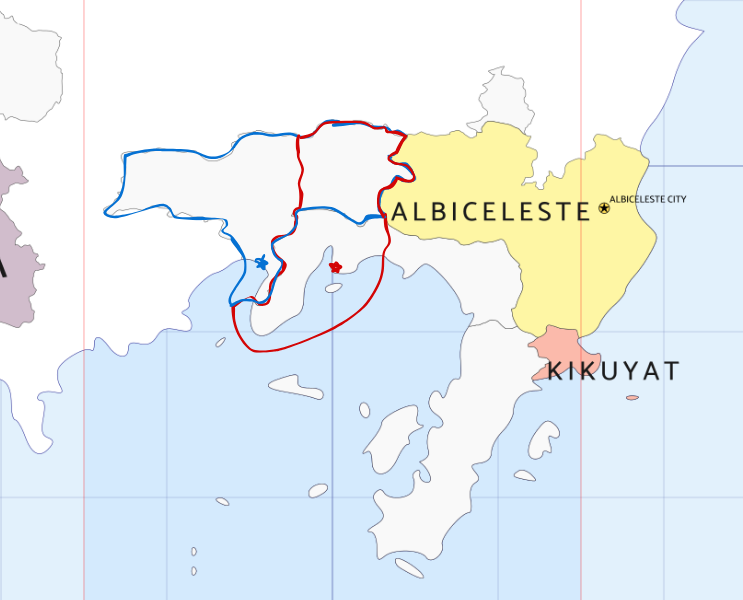
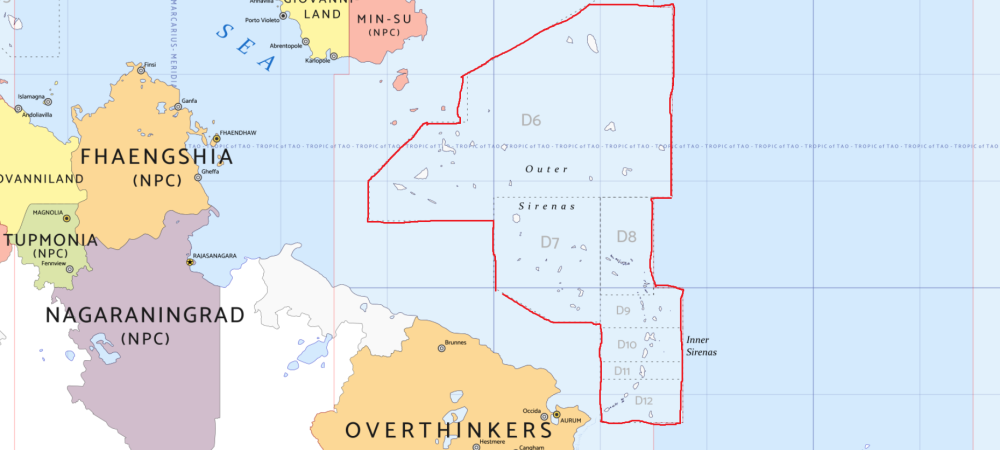







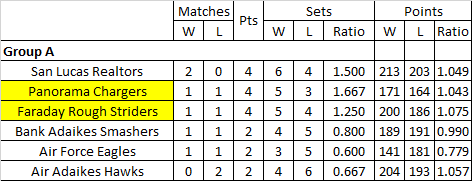
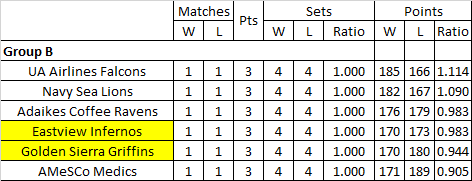
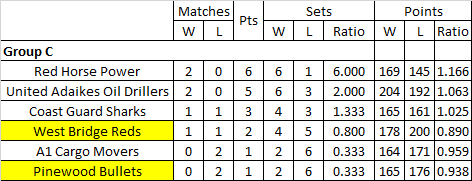
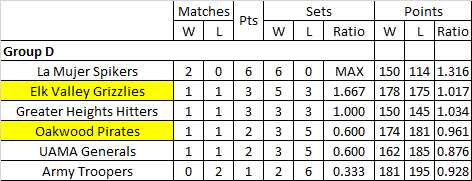
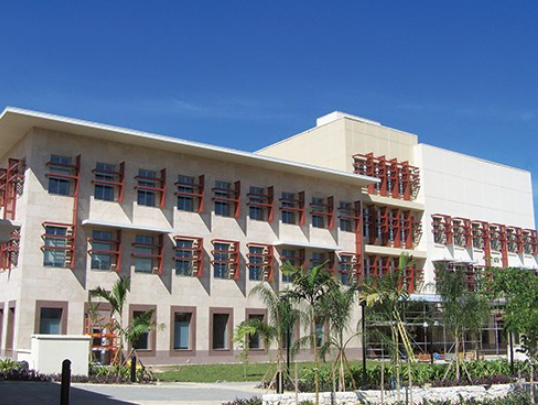


.png.995f4de39fd4d2cf4f5aa2ba1c4c410c.png)



